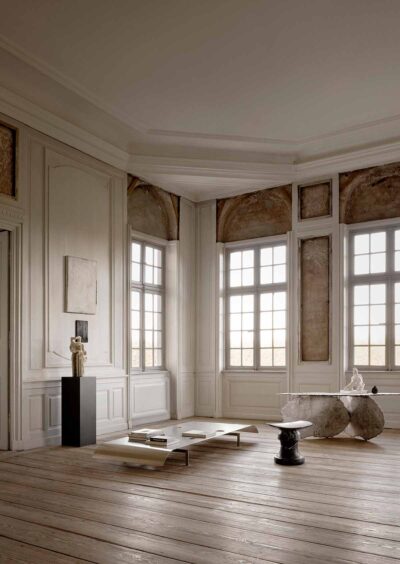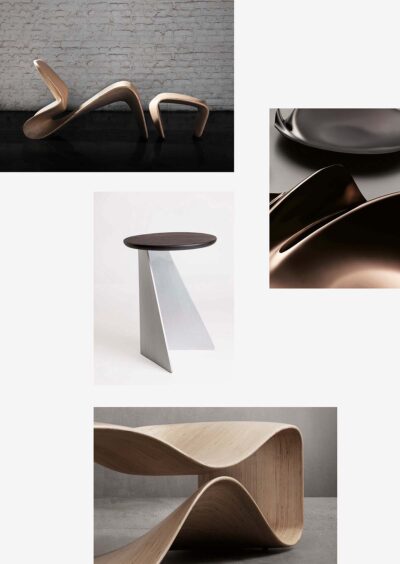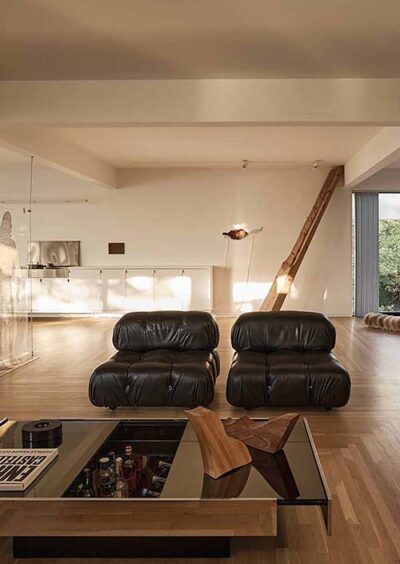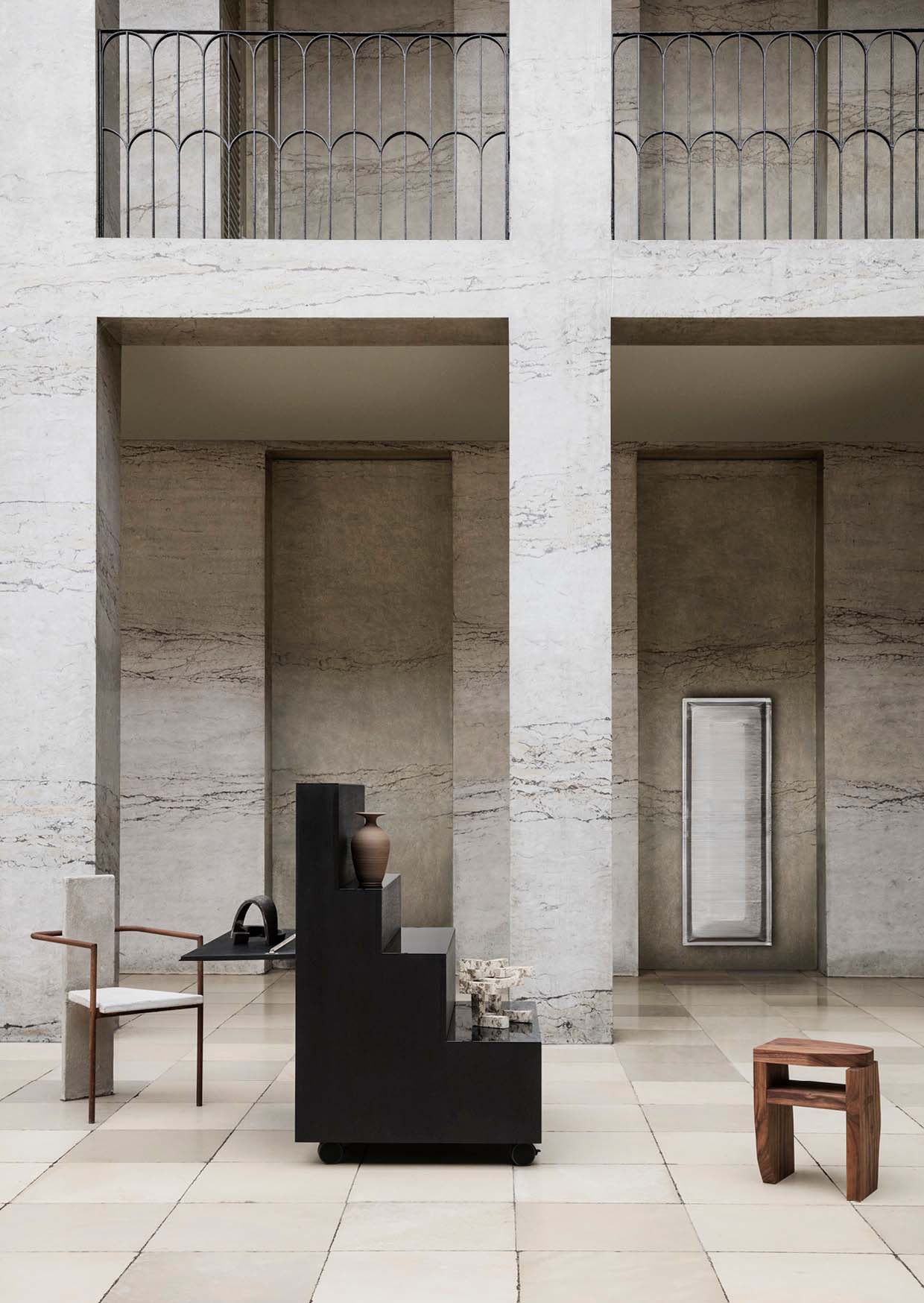
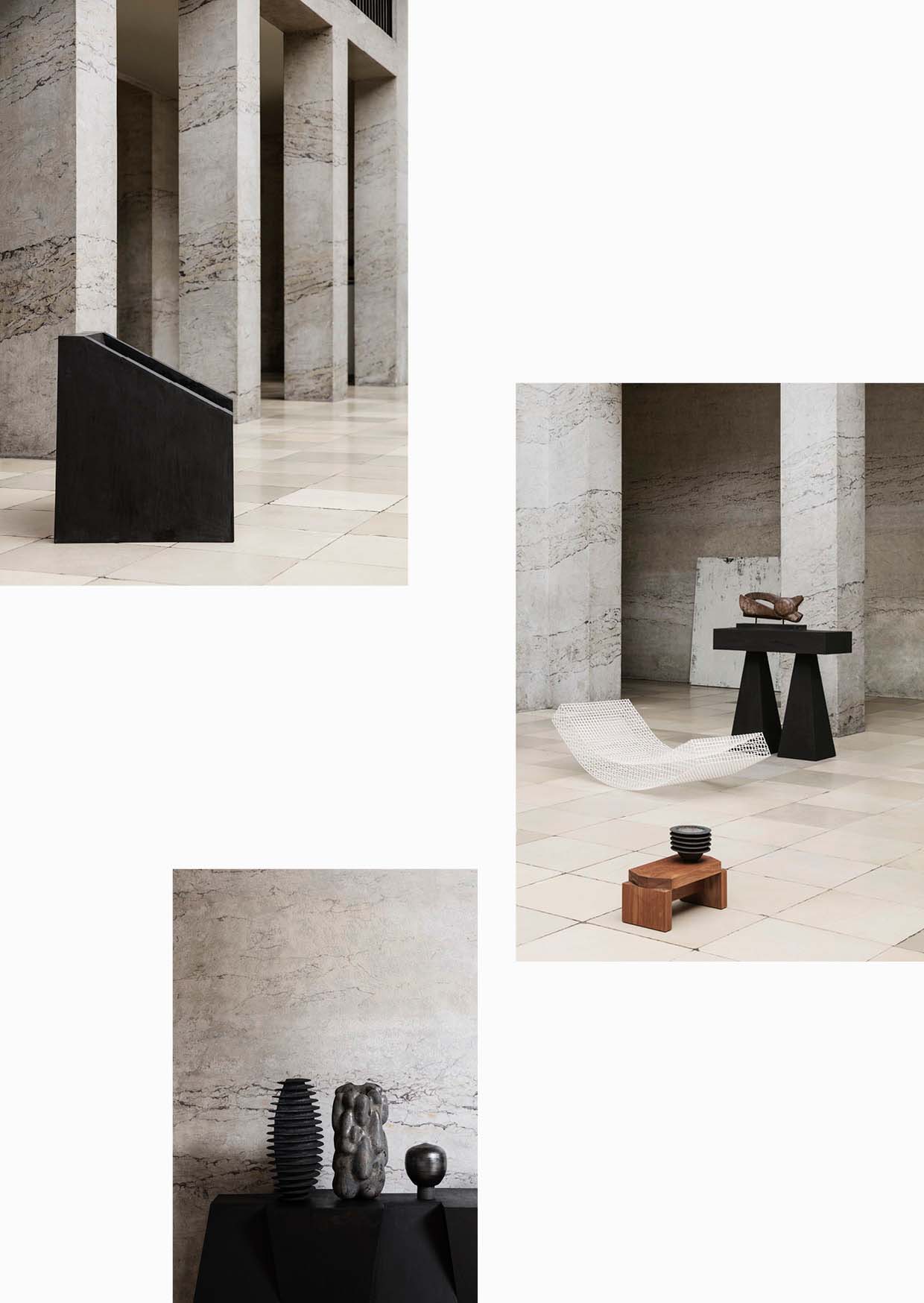
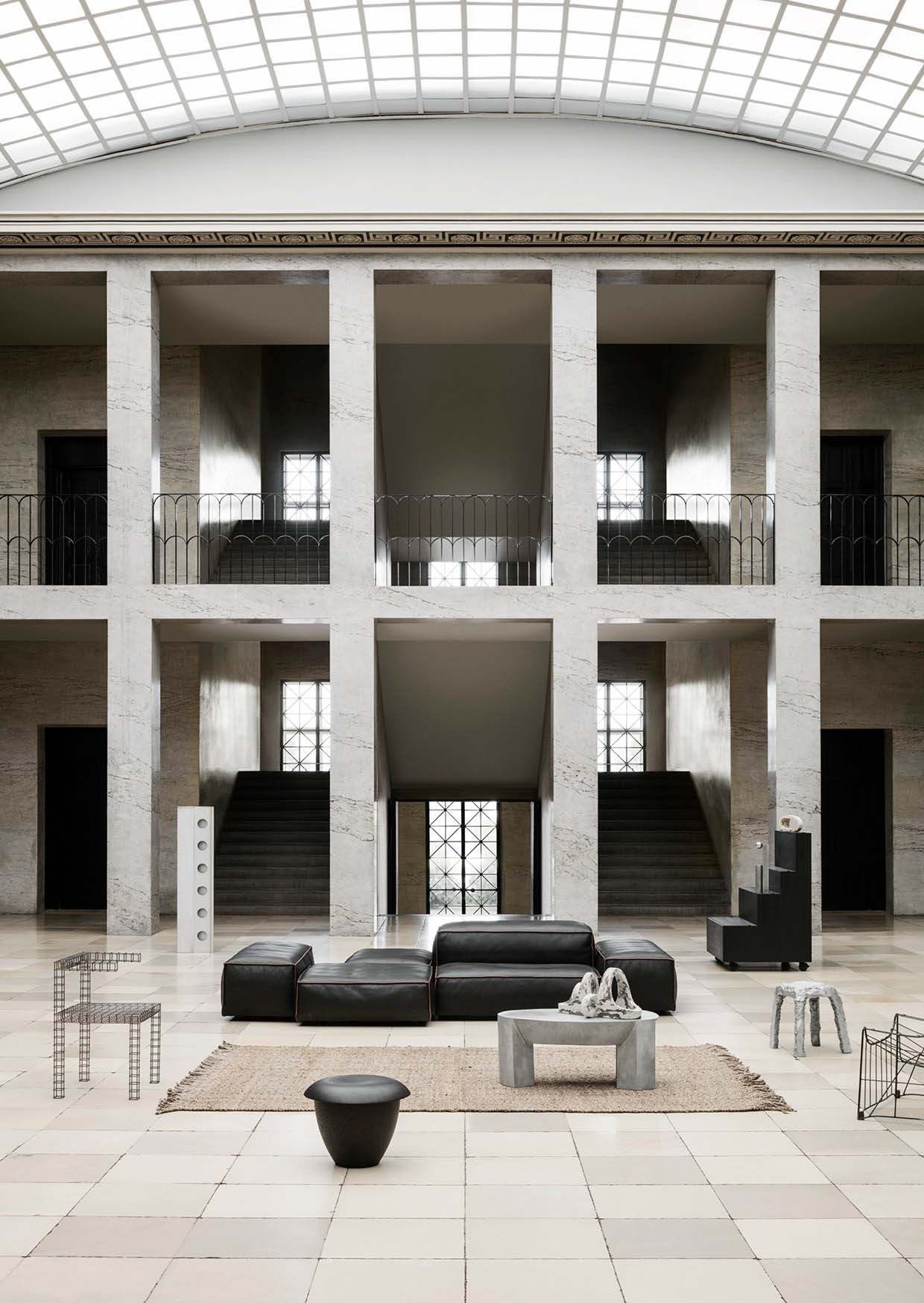
CASE STUDY
— MONUMENTAL MONOCHROME
Design
The enduring aesthetic of Danish furniture has always been entirely in step with other contemporary design practices, ceramics, glass, textiles, and particularly architecture. In 1924, architect G. B. Hagen og Edvard Thomsen completed the Øregård Gymnasium, its austere and strictly classical expression, characteristic of educational institutions of the time.
The hard-edged grid of its glass-roofed interior hall is the perfect backdrop for this restrained tonal study of forceful and assertive furniture and objects that carry on the entrenched design tradition spanning both monumentality and lightness. With materials that range from aluminium and stainless-steel to wood, concrete and clay, chairs and tables, sculptures and vases share an emphatic presence that confidently strides across decades and styles.
The Case Study Monumental Monochrome appears in Ark Journal VOLUME VIII.
STYLIST PERNILLE VEST
PHOTOGRAPHY HEIDI LERKENFELDT
RETOUCH THOMAS CATO
CASE STUDY
— DISSONANT BEAUTY
As in music, interior design calls on many elements – rhythm, contrast, repetition – to create that most subjective of visions: beauty.
DESIGN MUMBAI
India’s creativity, natural resources, extensive skills, technological advancements and deep historical roots deserve wider recognition and appreciation.
CINCINATTI MODERN
High on a hillside in Cincinnati, sits a two-storey modernist wonder by two unsung heroes of American architecture, built for an art collector in the 1980s and that has been given a sensitive makeover to accommodate the collection of its second owner.

CASE STUDY
— MONUMENTAL MONOCHROME
Design
The enduring aesthetic of Danish furniture has always been entirely in step with other contemporary design practices, ceramics, glass, textiles, and particularly architecture. In 1924, architect G. B. Hagen og Edvard Thomsen completed the Øregård Gymnasium, its austere and strictly classical expression, characteristic of educational institutions of the time.
The hard-edged grid of its glass-roofed interior hall is the perfect backdrop for this restrained tonal study of forceful and assertive furniture and objects that carry on the entrenched design tradition spanning both monumentality and lightness. With materials that range from aluminium and stainless-steel to wood, concrete and clay, chairs and tables, sculptures and vases share an emphatic presence that confidently strides across decades and styles.
The Case Study Monumental Monochrome appears in Ark Journal VOLUME VIII.
STYLIST PERNILLE VEST
PHOTOGRAPHY HEIDI LERKENFELDT
RETOUCH THOMAS CATO


